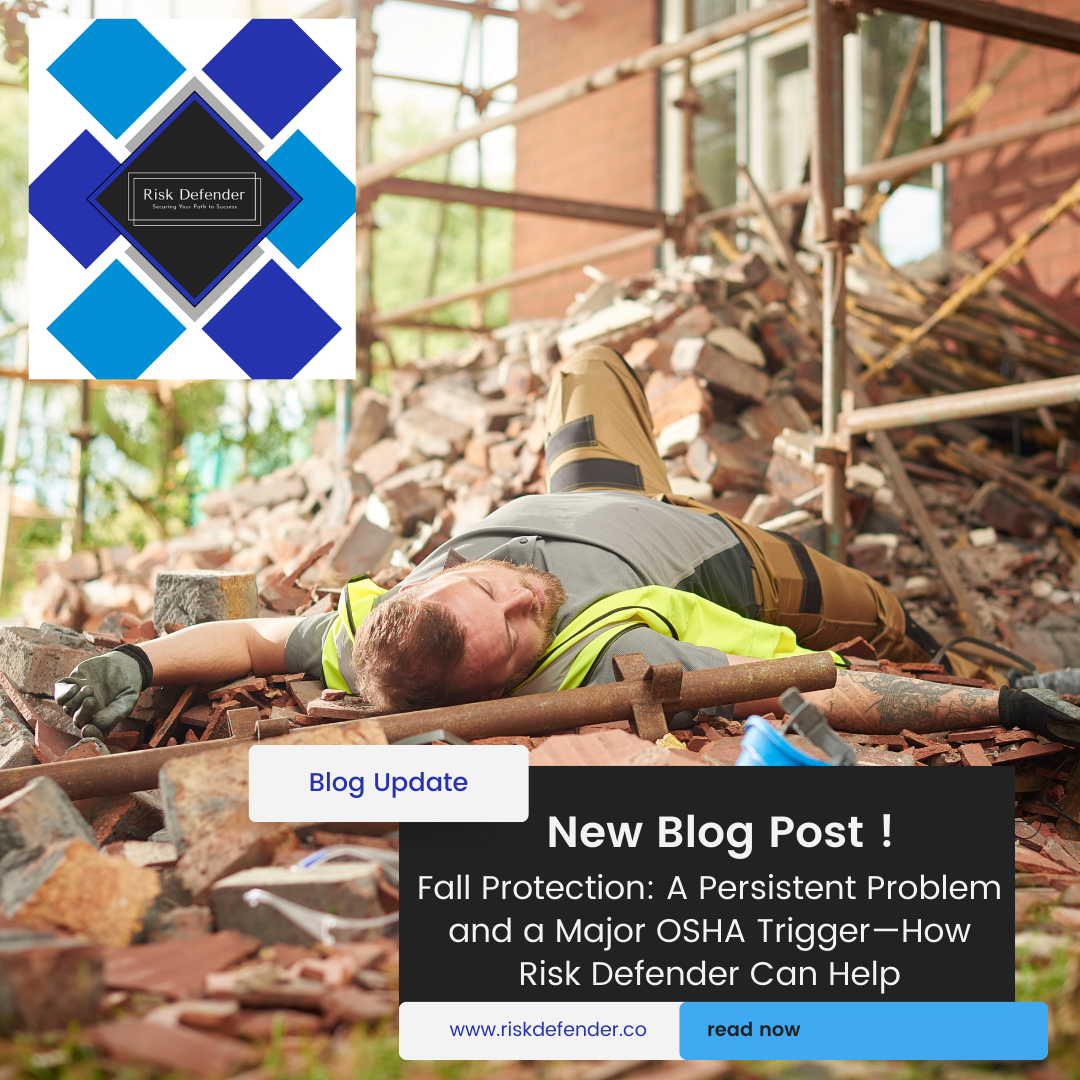Fall protection violations have long been a major issue in workplace safety, consistently topping OSHA’s list of most frequently cited violations year after year. In 2023, fall protection once again claimed the number one spot, highlighting the ongoing challenges that businesses face in maintaining safe working environments, especially at heights. Even more concerning is that these violations are not just common—they also create an “Imminent Danger” scenario that practically invites OSHA inspectors to walk onto your site.
Why Is Fall Protection Still Such a Major Issue?
Despite decades of awareness and clear OSHA regulations, fall protection violations continue to plague industries across the board. Several factors contribute to this problem:
- Inadequate Systems and Equipment: Employers often fail to invest in the necessary fall protection systems or do not maintain them properly.
- Lack of Training: Many companies fall short when it comes to providing comprehensive fall protection training, leaving employees unaware of hazards or how to use safety equipment correctly.
- Complexity of Regulations: OSHA’s regulations are comprehensive and specific, making it challenging for businesses without a dedicated safety team to keep up.
But the issue isn’t just about fines and compliance—it’s also about the safety of workers. OSHA has established strict fall protection standards for good reason: falls are one of the leading causes of serious injuries and fatalities in the workplace. Employers who don’t comply put their employees at serious risk.
How Lack of Fall Protection Triggers OSHA Inspections
One of the fastest ways to prompt an OSHA inspection is by exposing workers to the “Imminent Danger” of working without proper fall protection. OSHA defines “Imminent Danger” as any condition where there is a high likelihood that death or serious physical harm could occur immediately or before the condition can be corrected.
When OSHA gets wind of workers operating at dangerous heights without fall protection, it’s often seen as an immediate threat. This makes your worksite a prime target for unannounced inspections. Once an OSHA inspector steps foot on your property, they have the authority to assess the entire site, not just the initial complaint area. This opens up the potential for additional citations across various safety standards, compounding the risks and penalties for businesses.
Why Fall Protection Training Is Critical
Inadequate training is one of the most common reasons fall protection violations occur. OSHA requires that all employees working at heights of 6 feet or more (in construction) and 4 feet or more (in general industry) must be trained on fall hazards and proper safety procedures. Without this essential training, workers may unknowingly put themselves at risk, and the consequences can be severe.
Training goes beyond just checking a compliance box; it’s about ensuring that employees fully understand the hazards and the right procedures to mitigate them. Unfortunately, many businesses overlook this key aspect, resulting in non-compliance and unsafe working conditions.
How Risk Defender Helps Close the Gaps
At Risk Defender, we understand the complexities of OSHA regulations and how daunting it can be to ensure your business is compliant, especially with fall protection rules. That’s why we’re here to help you close any gaps and avoid triggering an OSHA inspection.
- Thorough Safety Reviews: We conduct comprehensive safety assessments of your fall protection systems and procedures, pinpointing areas that need improvement.
- Proactive Compliance Support: Our ongoing support and regular audits ensure that your safety procedures are not only compliant but continue to meet OSHA’s evolving regulations over time.
- Documentation and Recordkeeping: Risk Defender helps you maintain the necessary documentation—such as fall hazard assessments and training certifications—to prove compliance during an inspection.
Avoid Imminent Danger and Stay OSHA-Compliant with Risk Defender
With fall protection violations remaining a persistent problem and one of the easiest ways to get OSHA to inspect your site, it’s essential to take proactive steps. By partnering with Risk Defender, you can protect your workers from harm, avoid expensive fines, and keep OSHA inspectors at bay. Our customized compliance services are designed to keep your business safe, compliant, and prepared for any safety challenge.






